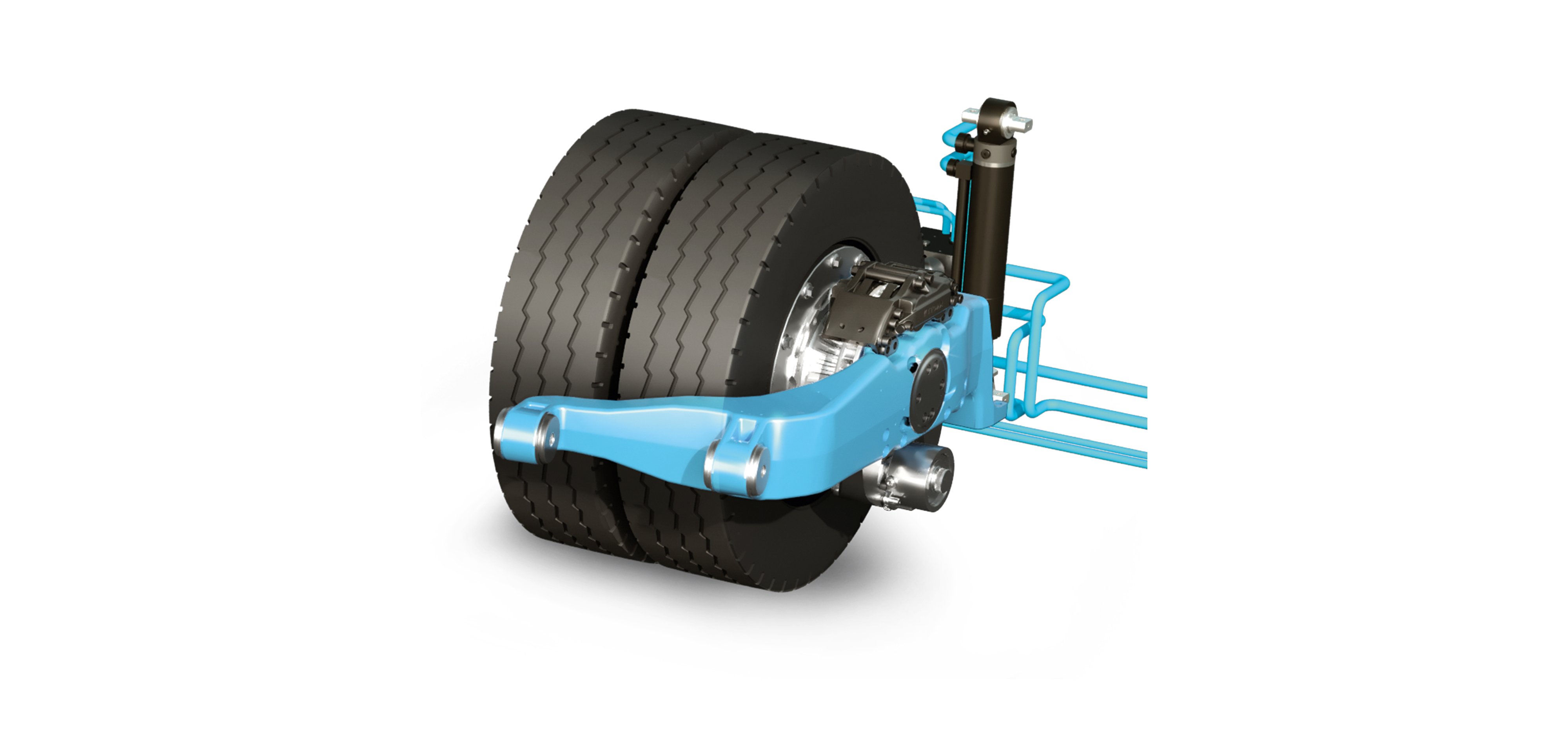Electric buses have greater range and run more smoothly using chassis systems without compressed air
“Compressed air is a real energy drain for the suspension and damping of the vehicle chassis. On top of that, it takes up too much space,” explains Dr.Mark Wöhrmann, Managing Director of HEMSCHEIDT Fahrwerktechnik GmbH & Co. KG. “A better alternative makes use of oil as the hydraulic fluid for a hydropneumatic suspension and damping. Our system gives a high degree of comfort and stability – even on uneven road surfaces.“
Leveling in a fraction of a second with oil
The energy density of oil means that the reaction times and responsiveness of the chassis is very fast. “Oil transmits forces with virtually no energy loss,” explains Dr. Mark Wöhrmann. In the case of large load shifts, for example, when passengers exit or enter a bus, a hydropneumatic suspension system brings the bus to a level position in a fraction of a second.
“In addition, there is significantly higher energy efficiency than with compressed air. This is because the oil in the closed hydropneumatic suspension and damping system from HEMSCHEIDT Fahrwerktechnik is continually reused as the hydraulic fluid,” says Managing Director Dr. Mark Wöhrmann. With this innovative solution, more than two thirds of the energy typically used for the bus’s lifting and lowering operations can be saved.
With compressed air more than 80 percent of the energy is lost
The situation is exactly the opposite with conventional suspension and damping systems that work with compressed air. Simply through the operation of the compressor, two thirds of the energy escapes. At the end of a typical lifting and lowering operation with compressed air, for example at a bus stop, more than 80 percent of the used energy is lost.
HEMSCHEIDT Fahrwerktechnik has developed the new hydropneumatic suspension and damping system in an intensive process of exchange with customers from the commercial vehicle sector and with manufacturers of axles and chassis. “By the end of this year, we want to begin test operations with prototypes so that we will be able to supply the first customers with the hydropneumatic suspension and damping systems starting in 2024,” says Dr. Mark Wöhrmann, looking ahead.
Energy savings: With hydropneumatics buses run longer
Rainer Eickhoff, Head of Sales and Project Management at HEMSCHEIDT Fahrwerktechnik, explains how this innovation brings a new dimension to electromobility in the bus sector: “Our hydropneumatic suspension and damping system conserves the battery capacities of electric buses and gives the vehicles a longer running time. Using oil as a hydraulic fluid in the chassis, e-buses have a significantly further range, which is crucial for economical and efficient operation, especially in local public transport.”
Currently, HEMSCHEIDT Fahrwerktechnik is planning two variants of the new system: In the stand-alone system, the motor of the oil pump is controlled by a higher-level control unit. There is also an alternative: “Because a central pump is easy to integrate in existing vehicle concepts, in this way we can make it possible for transit companies to convert their current vehicles to e-mobility,” explains Rainer Eickhoff.
Positive characteristics also when bio-oil is used as hydraulic fluid
Using oil as a hydraulic fluid also offers good prospects from a sustainability standpoint. The advantageous energy-density characteristics can also be achieved when using bio-oil that does not come from fossil resources.
In addition, the chassis components required for a hydropneumatic system are much smaller. Thanks to the high pressure that can be achieved with hydraulic systems, the extremely compact suspension cylinders require comparatively little installation space at the wheel. “Less space also means less weight for the suspension and damping system, which also has a positive effect on overall energy consumption,” says Sales Manager Rainer Eickhoff.
Suspension and damping integrated in one system
The excellent energy density of oil and the quick power transmission that comes from this results in benefits for other functions as well. With appropriate controls, loads can be distributed among various wheels or axles. “Our system thus functions like a hydraulic stabilizer which can compensate for roll moments without requiring additional components,” says Dr. Mark Wöhrmann. “In addition, the necessary damping for the vehicle can be directly integrated in the hydraulic system so that suspension and damping are provided together by a single system.”
In connection with its presence at Busworld Europe, HÜBNER has published a dedicated website that brings together all the product information and highlights from the exhibition: www.hubner-group.com/busworldeurope-2023


